Silence of the graves – Khosh Baag maintained by Siraj’s Begum once upon a time
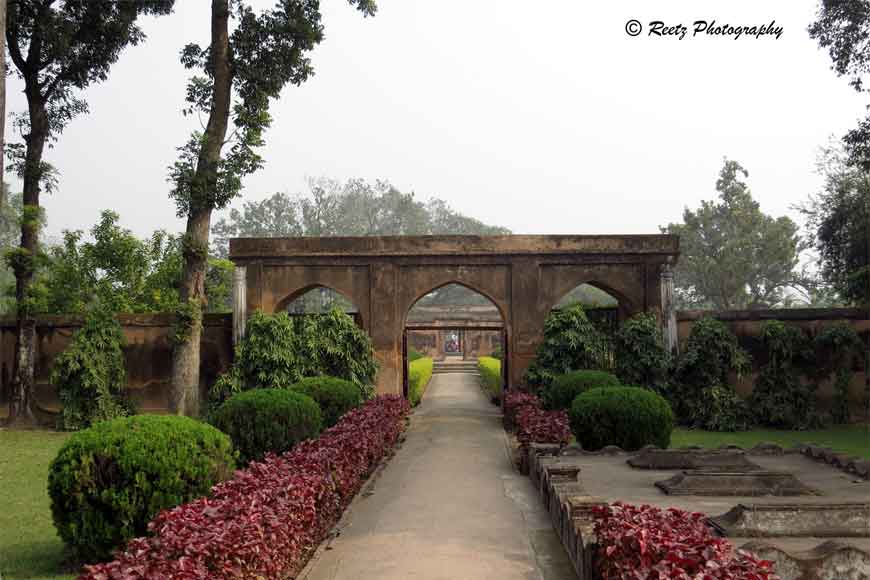
This is a burial ground, where silence reigns and history speaks. Khosh Baag is the royal graveyard of Nawab Alivardi Khan and his family including grandson Siraj-ud-Daullah, his mother and wife, daughters, Siraj’s begum and many other significant kith and kin. It was built by Alivardi Khan himself during early eighteenth century who fondly named it Khosh Baag, meaning a ‘garden of happiness’, solely reserved for the entombment of Afshar Dynasty lineage.
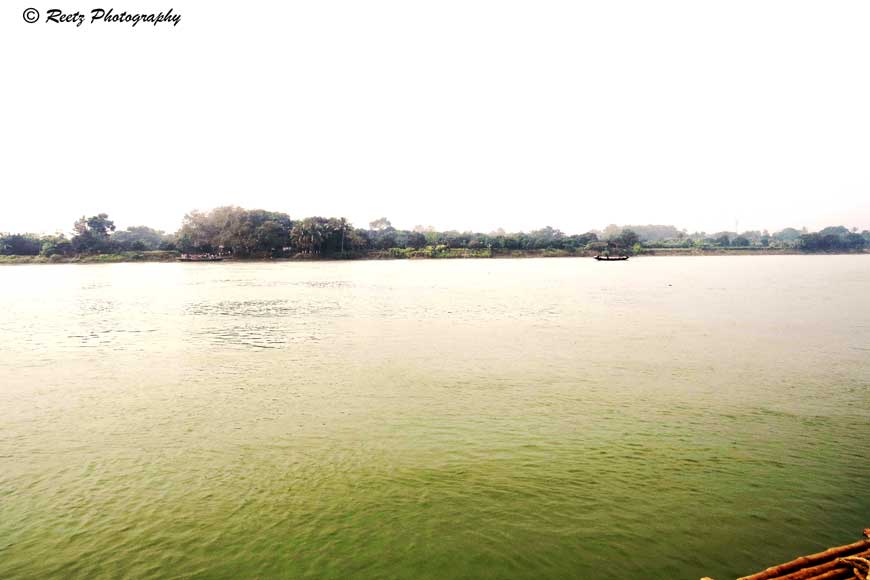 Bhagirathi River
Bhagirathi River
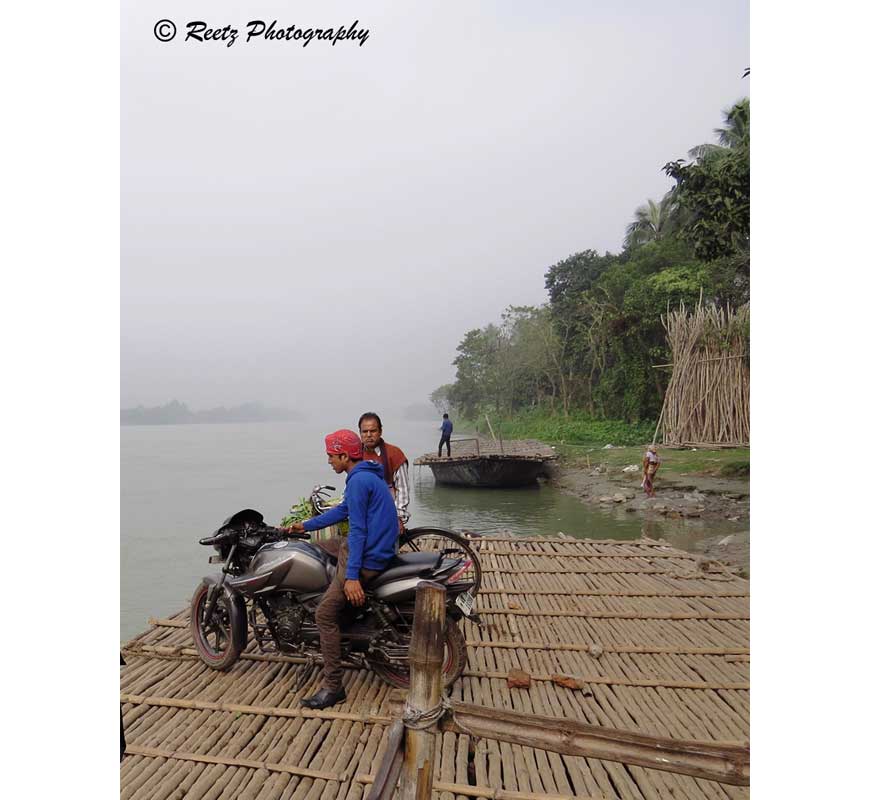 River crossing by bamboo motor boats
River crossing by bamboo motor boats
It took us close to 6 hours by road to reach Murshidabad, 15 minutes to cross the river from New Palace jetty and another 10 minutes by rustic roads to the burial ground. The natives call the motorboats here as ‘Bhutbhuti’, resembling the noise of its propeller. However, we were shocked to find them well equipped to transport big SUVs like ours!
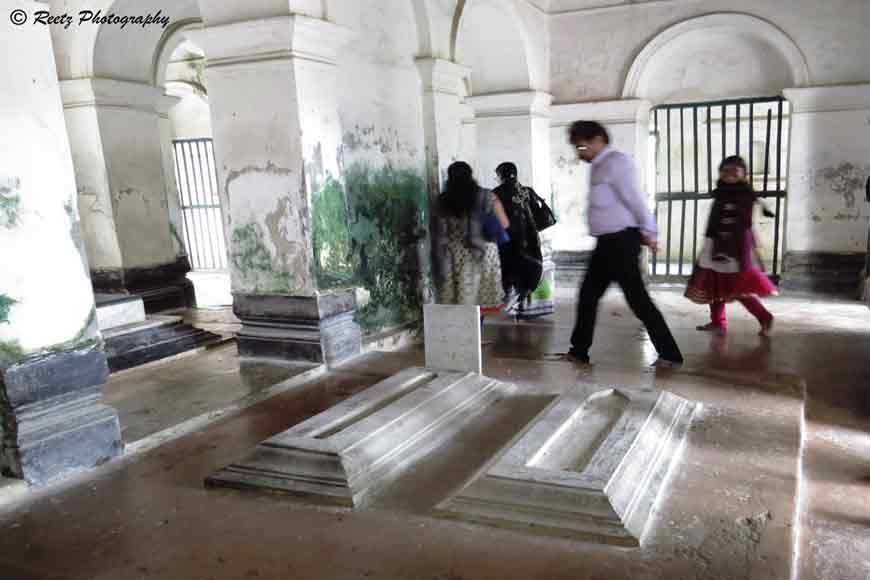 Siraj and Lutfa's graves
Siraj and Lutfa's graves
The old Nawab chose the site of this beautiful gardened cemetery on the western side of Bhagirathi River (Ganga is known by the name Bhagirathi here), overlooking his palace on the opposite bank. He also architected an in-house mosque similar to that of Delhi’s Jama Masjid. Alivardi Khan asked his men to specially surround the proposed resting area of his own grave by octagonal bastions, erect double walled enclosures with multiple holes for musketry, while leave the remaining spaces open for others.
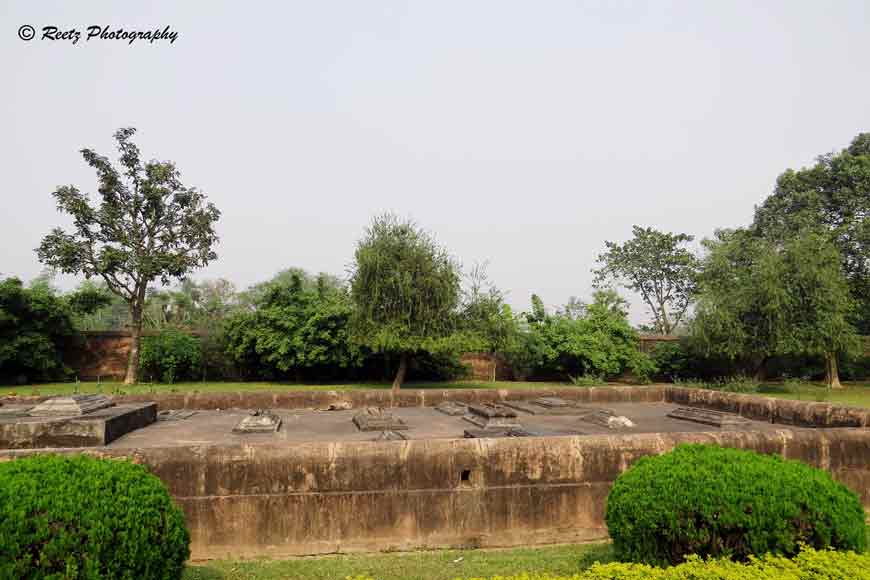 Other Afsar dynasty family member's graves
Other Afsar dynasty family member's graves
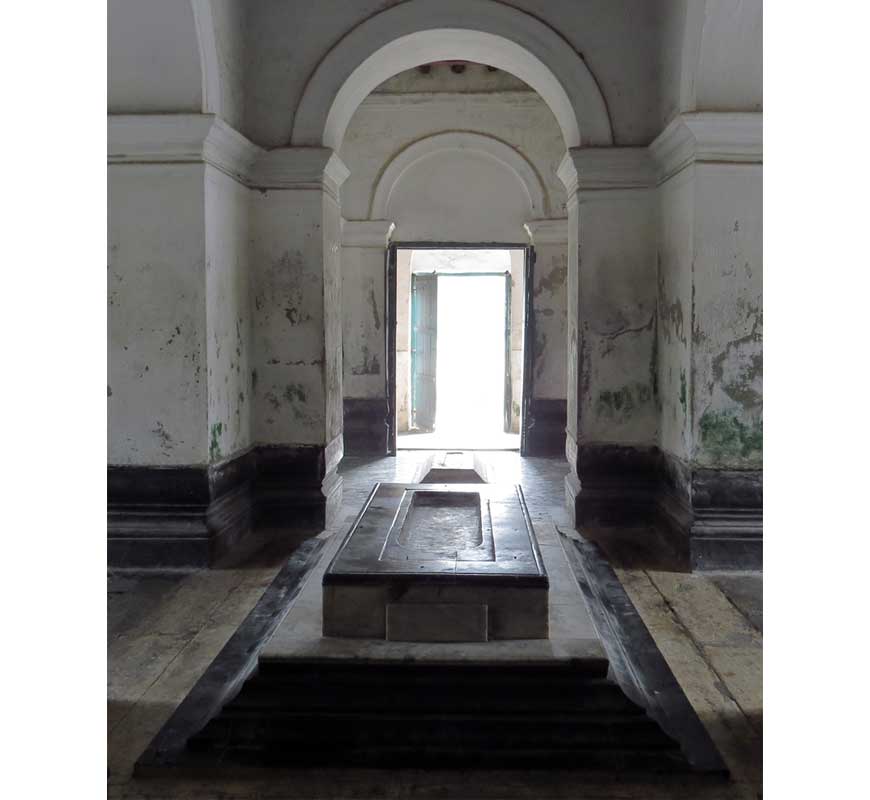 Alivardi Khan's grave
Alivardi Khan's grave
Eventually the ominous moment arrived. On a stormy night of 1756, the veteran Nawab closed his eyes forever. On his grave a marble plaque was engraved by Siraj with holy inscriptions written in Persian language. Even Siraj’s cold coffin was also laid just beside the old Nawab. The young Nawab’s tomb at Khosh Baag was specially built inside a rectangular flat-roofed mausoleum surrounded by open gardened balcony. Aside, rests in peace Lutfa, Siraj’s begum and their daughter, entombed at different times.
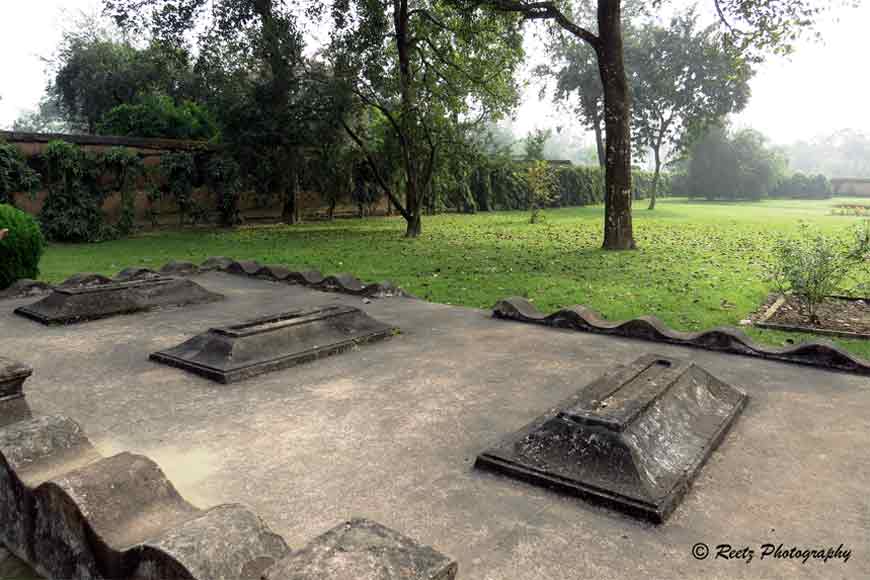 Lutfa's three eunich protectors graves
Lutfa's three eunich protectors graves
The principal eunuchs at Lutfa’s protection though fought hard to save Lutfa from the assault after Siraj’s capture but were killed by Mir Miran over a head-on clash. Their mortal bodies were later buried at Khosh Baag cemetery. When Lutfa petitioned to the British, her plea was approved against a condition – that she has to devote herself at the services of the Company. The queen spent the last twenty years of her deserted life inside a small soggy room just beside Siraj’s grave at Khosh Baag, taking care of the maintenance of all the graves and adjoining rose garden against a paltry wage.
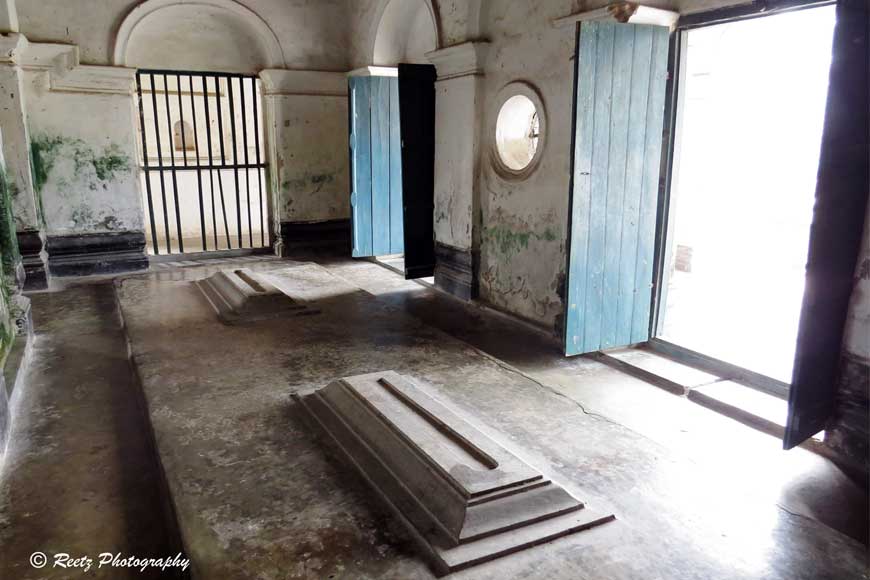 Amina and Ghaseti begum's graves
Amina and Ghaseti begum's graves
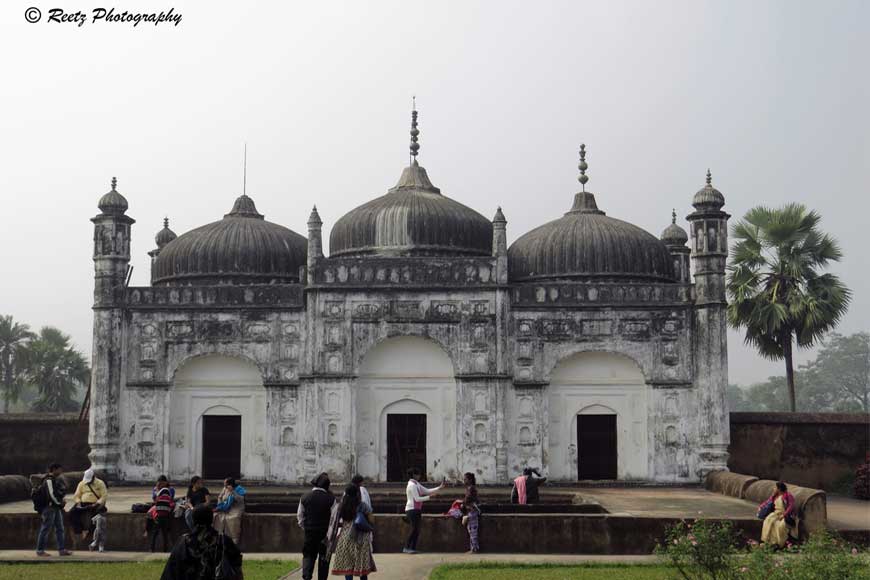 Khosh Baag mosque
Khosh Baag mosque
There is another cluster of open graves just outside the royal mausoleum, where lies five cousins of Siraj and their wives. Dan Sha being a fakir was the only non-relative of Nawab Alivardi Khan who was honoured with a mausoleum at Khosh Baag.
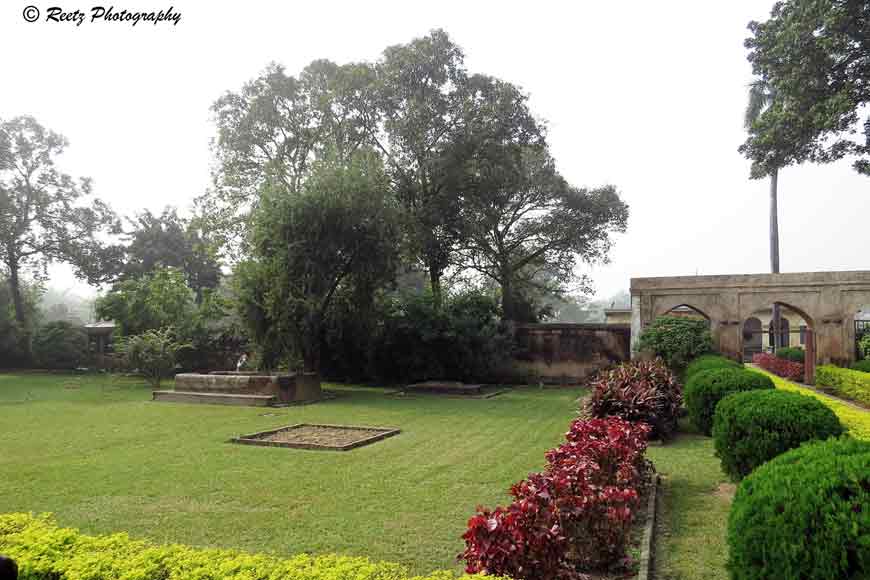 Dan Sha Fakir's grave outside the royal court at Khosh Baag
Dan Sha Fakir's grave outside the royal court at Khosh Baag
That’s history. But what remains today is a well maintained Islamic graveyard by the side of the Ganges. There are many Government licensed tourist guides to walk you down the yesteryears of bloodshed and vengeance, while taking you by the graves.
How to reach:
Best way to reach is by train from Sealdah. By road, it takes around 6 hours (200 kilometers) via NH34.
Where to stay:
There are no accommodation facilities at Khosh Baag. Government tourist lodge is available at Berhampore, around 20 kilometers away, on the other side of the river.
What to see around:
Kiriteshwari Temple, River cruise on bhutbhuti (indigenous motor boats), Hazar Duari Palace









